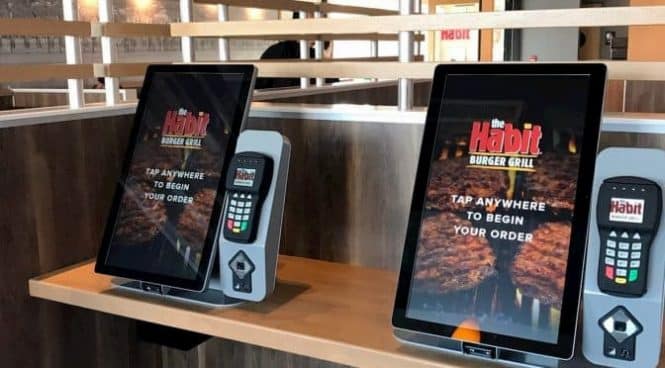
Ensuring an Accessible Kiosk Experience
By Laura Boniello Miller of Vispero
Editors Note: Worth noting the image shows QSR self order kiosk by Olea Kiosks and you can see the Audio Nav pad by Storm Devices integrated.
The Future of Kiosks in the Restaurant Industry
Kiosks allow users to avoid lines and oftentimes allow them a greater ability to customize their order. Kiosk deployers typically attempt to design the kiosk interface to decrease the time it takes for a user to place an order. No one – neither the restaurant nor the restaurant patron – is well-served if the time it takes to place an order on a kiosk is significantly slower for users with disabilities and requires additional human assistance.
Restaurant self-service kiosks are currently deployed in leading restaurant chains such as Taco Bell, KFC, Panera Bread, Wendy’s, Subway, and Dunkin’ Donuts via both pilots and full international rollouts. Additionally, tabletop ordering or payment tablets are used in TGI Fridays, Olive Garden, Friendly’s, Tropical Smoothie, and Chili’s, to name a few. Self-ordering and self-service POS solutions are running apps such as Appetize, Tillster, and Ziosk. In these examples, the user experience should be accessible for all patrons, whether on a robust kiosk enclosure or a small handheld tablet.
Read full article at Modern Restaurant Management
